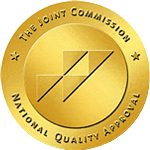When choosing the right option for your mental health care, it is helpful to understand the landscape of treatment options: the differences between outpatient and inpatient treatment. We are going to navigate through the nuances of each and help you figure out which might be the best fit for you or your loved ones.
Outpatient Treatment:
- Flexibility: One of the major perks of outpatient treatment is its flexibility. You have the freedom to schedule sessions around your work, school, or other commitments. It’s like fitting puzzle pieces together, creating a treatment plan that seamlessly integrates into your life.
- Community Connection: Outpatient treatment often allows individuals to stay connected with their communities. You’re not isolated within the confines of a facility; instead, you can continue building and nurturing your support network, which can be vital for long-term recovery.
- Cost-Effective: Compared to inpatient treatment, outpatient options tend to be more cost-effective. You’re not covering the expenses of room and board, which can significantly lighten the financial burden.
Inpatient Treatment:
- Structured Environment: Inpatient treatment provides a highly structured environment, offering round-the-clock care and support. This structured setting can be immensely beneficial for individuals who require a higher level of monitoring and supervision.
- Intensive Focus: Inpatient programs often offer a more intensive focus on therapy and treatment. With dedicated professionals on hand, you have access to a comprehensive range of therapeutic modalities tailored to your specific needs.
- Temporary Retreat: Think of inpatient treatment as a temporary retreat from the stresses and triggers of everyday life. It provides a safe space where you can fully immerse yourself in the healing process without external distractions.
Choosing the Right Path:
What is the best way to choose between outpatient and inpatient treatment? It ultimately boils down to individual needs, preferences, and the severity of the condition.
- Outpatient Treatment might be ideal if you have a strong support system in place, can manage your symptoms outside of a structured environment, and prefer to maintain your daily routines.
- Inpatient Treatment could be the right choice if you require intensive support, struggle with severe symptoms that interfere with daily functioning, or need a break from environmental triggers.
Remember, there’s many different approaches to mental health treatment. It’s all about finding what works best for you and your unique journey. Whether you opt for outpatient, inpatient, or a combination of both, the most important thing is taking that courageous step towards healing and self-discovery.









